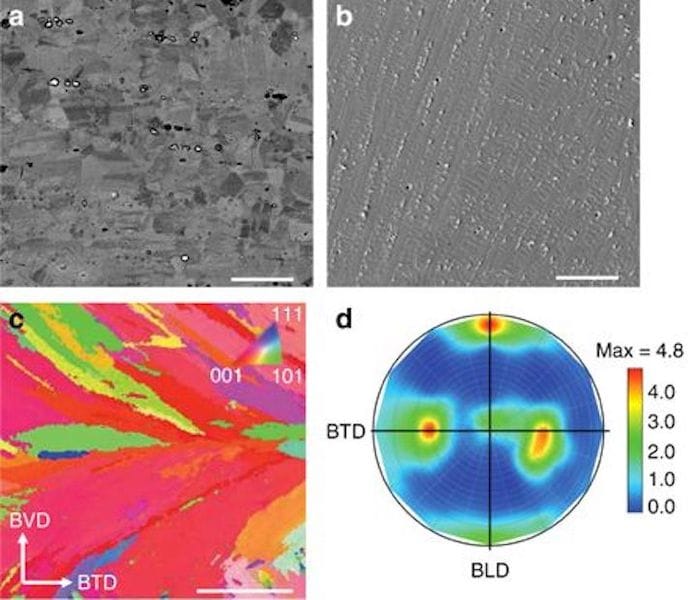![Microscopic analysis of 3D printed metals [Source: Nature]](https://fabbaloo.com/wp-content/uploads/2020/05/image-asset_img_5eb0a0cd585eb.jpg)
New research shows how it may be possible to make 3D printed superalloys even stronger.
Superalloys are metal materials that exhibit great strength and corrosion resistance even when subjected to high heat and stress. There are plenty of such superalloys, and some are 3D printed in metal 3D printers, typically by fusing fine powder with powerful lasers.
However, researchers noted that 3D printed superalloy objects sometimes have issues that are not present in conventionally manufactured objects in the same material. New research explored this phenomenon and determined some methods for increasing strength and consistency.
Apparently the stress oscillates in the material resulting in a characteristic serrated pattern, as seen here:
In the paper “Absence of dynamic strain aging in an additively manufactured nickel-base superalloy” by Allison M. Beese, Zhuqing Wang, Alexandru D. Stoica & Dong Ma, they explain:
“Dynamic strain aging (DSA), observed macroscopically as serrated plastic flow, has long been seen in nickel-base superalloys when plastically deformed at elevated temperatures. Here we report the absence of DSA in Inconel 625 made by additive manufacturing (AM) at temperatures and strain rates where DSA is present in its conventionally processed counterpart. This absence is attributed to the unique AM microstructure of finely dispersed secondary phases (carbides, N-rich phases, and Laves phase) and textured grains.”
And
“Based on experimental observations, we propose a dislocation-arrest model to elucidate the criterion for DSA to occur or to be absent as a competition between dislocation pipe diffusion and carbide–carbon reactions. With in situ neutron diffraction studies of lattice strain evolution, our findings provide a new perspective for mesoscale understanding of dislocation–solute interactions and their impact on work-hardening behaviors in high-temperature alloys, and have important implications for tailoring thermomechanical properties by microstructure control via AM.”
That’s a lot of words, but basically they are saying that it is possible to eliminate the dynamic strain aging property from this particular material by very carefully tuning the manufacturing process to ensure specific crystalline microstructures in the material.
This is done through careful management of heat throughout the printing process, as well as additional heat treatments after the print completes.
I believe this to be a significant development, as it means it may be possible to produce metal 3D prints using certain superalloys that have more consistent mechanical performance. The serrated strain curve suggests that deformations could occur with less predictability, which is never good. It could also eliminate 3D printing as a possibility for certain applications.
But that may no longer be the case, thus opening up the possibility of additional metal 3D printing applications.
But also this shows the incredibly precise nature of metal 3D printing for production applications. Unlike thermoplastic 3D printing, most metal 3D printing is not used for prototyping, but is used for end-use purposes. This means the engineering characteristics must definitely meet the requirements for real life use.
To do so is a rather complex matter, but as more research takes place, we slowly reach a place where more metal 3D printing can reliably be done.
Via Nature











A research thesis details the incredibly complex world of volumetric 3D printing. We review the highlights.